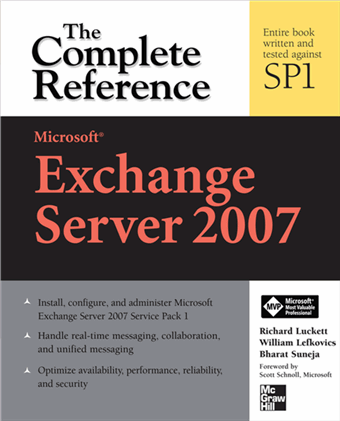220 Welcome to a California mail server: Fighting spam with SMTP Banners
Posted by Bharat Suneja at 7:45 AM
The much-talked about first conviction under the federal CAN-SPAM Act was handed out in California - to Nicholas Tombros in Los Angeles in 2004. Since then, quite a few spammers have had their date with the law, with the accompanying media brouhaha.
California anti-spam laws: California also has its own antispam laws - enacted as amendments to the Business and Professions Code. The rather lame one - Section 17538.4, allows California Attorney General to sue spammers, with a list of IFs that make it more like a "License To Spam". Section 17538.45 is the one of interest, aimed at protecting email service providers from spammers. Email service providers can file civil suits against spammers and claim greater of the following amounts:
- the actual monetary loss suffered by reason of that violation
- liquidated damages of $50 per message initiated or delivered, up to a maximum of $25,000 per day.
Any organization that provides the ability to send or receive email to registered users through equipment located in California (and is an "intermediary" in sending/receiving email) is an email service provider for the purpose of this law.
Interesting, as technology-related legislative action always is.
If your mail servers are located in California (and even if they are not... ), it makes sense to change the SMTP banner (SMTP 220 response) to give notice to a sender that your system should not be used to send unsolicited electronic mail advertisements.
The California Business and Professions Code Section 17538.45 states:
(3) (A) In any action brought pursuant to paragraph (1), the electronic mail service provider shall be required to establish as an element of its cause of action that prior to the alleged violation, the defendant had actual notice of both of the following:Let's leave the legal interpretation of laws to those who practice law. Regardless of whether your organization intends to take legal action against spammers or not, one of the important principles of information security is having policies in place and communicating them clearly. Not only does it demonstrate your organization's intent, it can be a potential deterrent for folks who may otherwise claim ignorance of such policies.
(i) The electronic mail service provider's policy on unsolicited electronic mail advertising.
(ii) The fact that the defendant's unsolicited electronic mail advertisements would use or cause to be used the electronic mail service provider's equipment located in this state.
(B) In this regard, the Legislature finds that with rapid advances in Internet technology, and electronic mail technology in particular, Internet service providers are already experimenting with embedding policy statements directly into the software running on the computers used to provide electronic mail services in a manner that displays the policy statements every time an electronic mail delivery is requested. While the state of the technology does not support this finding at present, the Legislature believes that, in a given case at some future date, a showing that notice was supplied via electronic means between the sending and receiving computers could be held to constitute actual notice to the sender for purposes of this paragraph.
(While we're on the subject of SMTP banners, for historical context, also take a look at Paul Hobbes & John Levine's draft from 1998 titled "Anti-UBE and Anti-UCE Keywords in SMTP Banners". Much later, a SMTP extension was also proposed to include such information - RFC 3865 - A No Soliciting Simple Mail Transfer Protocol (SMTP) Service Extension.)
Changing the SMTP banner: Assuming the policy is in place, the SMTP banner can be changed easily to communicate it, as hosted email security and compliance services provider Postini (acquired by Google not too long ago) does.
220 Postini ESMTP 11 y6_12_2c0 ready. California Business and Professions Code Section 17538.45 forbids use of this system for unsolicited electronic mail advertisements.
On Exchange Server 2003/2000 or if using Windows Server's SMTP service component on SMTP gateways, the banner text can be changed by setting the IIS Metabase value ConnectResponse, using any Metabase editor or the adsutil.vbs script that ships with IIS (in the Inetpub\AdminScripts directory by default).cscript adsutil.vbs set smtpsvc/1/ConnectResponse "220 California Business and Professions Code Section 17538.45 forbids use of this system for unsolicited electronic mail advertisements."
Note, the numeric value 1 after smtpsvc/ in the above command refers to the SMTP Virtual Server ID. Each SMTP VS has one, the default/first one starting at 1. To get a list of SMTP Virtual Servers using adsutil.vbs:
adsutil.vbs enum /p smtpsvc
Set-ReceiveConnector "Connector Name" -banner "220 (Optional: Server.domain.com). California Business and Professions Code Section 17538.45 forbids use of this system for unsolicited electronic mail advertisements."
That wasn't too difficult, was it? If that simple banner change deters a a single spammer from victimizing your users, and in the process buys you the legal ammunition (that may some day help your organization take legal action, should it decide to.... ), is it worth it?Labels: Administration, Anti-Spam, Security, SMTP

 Exchangepedia Blog is read by visitors from all 50 US States and 150 countries world-wide
Exchangepedia Blog is read by visitors from all 50 US States and 150 countries world-wide



0 Comments:
Post a Comment
Links to this post:
Create a Link
<< Home